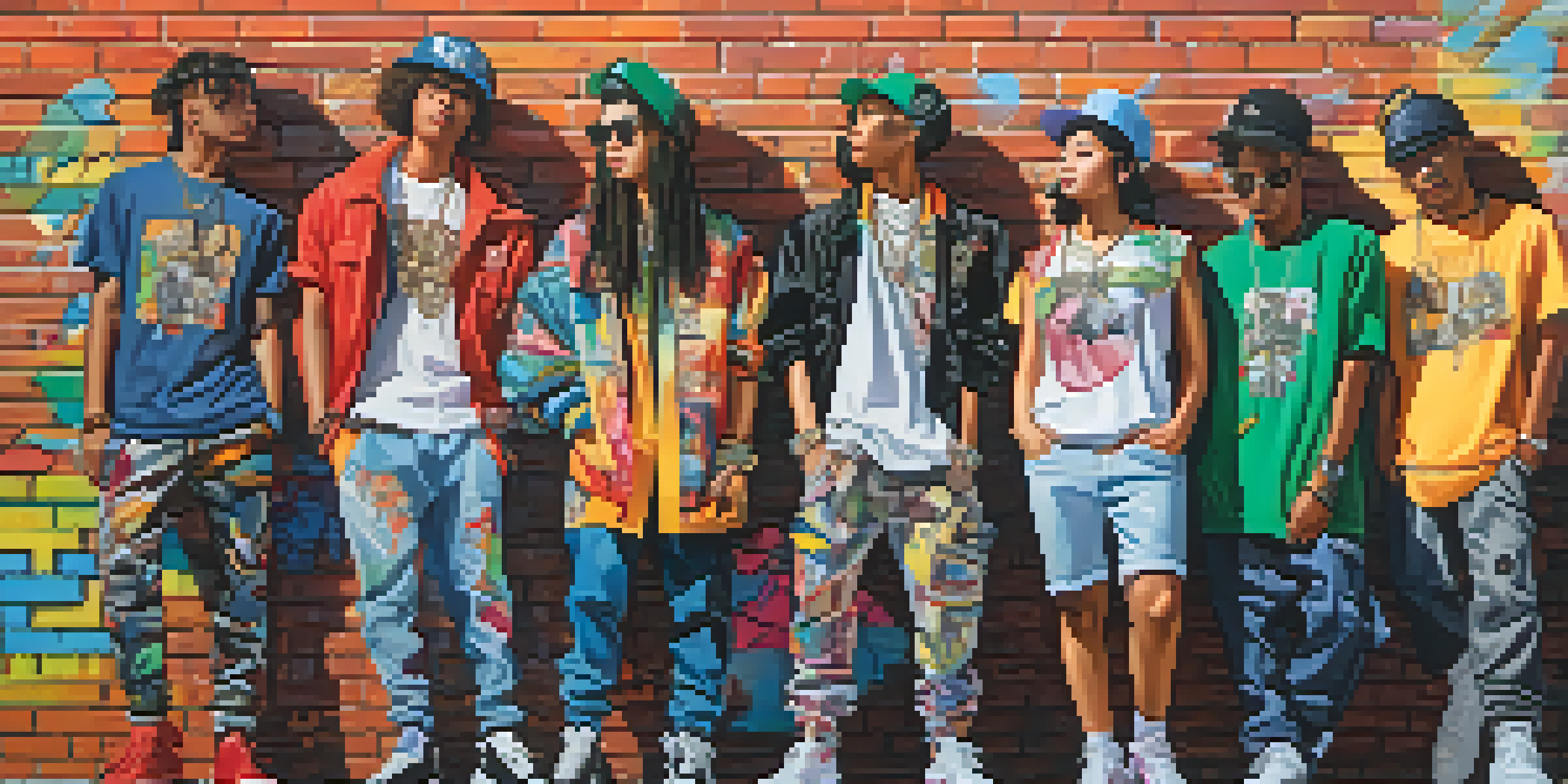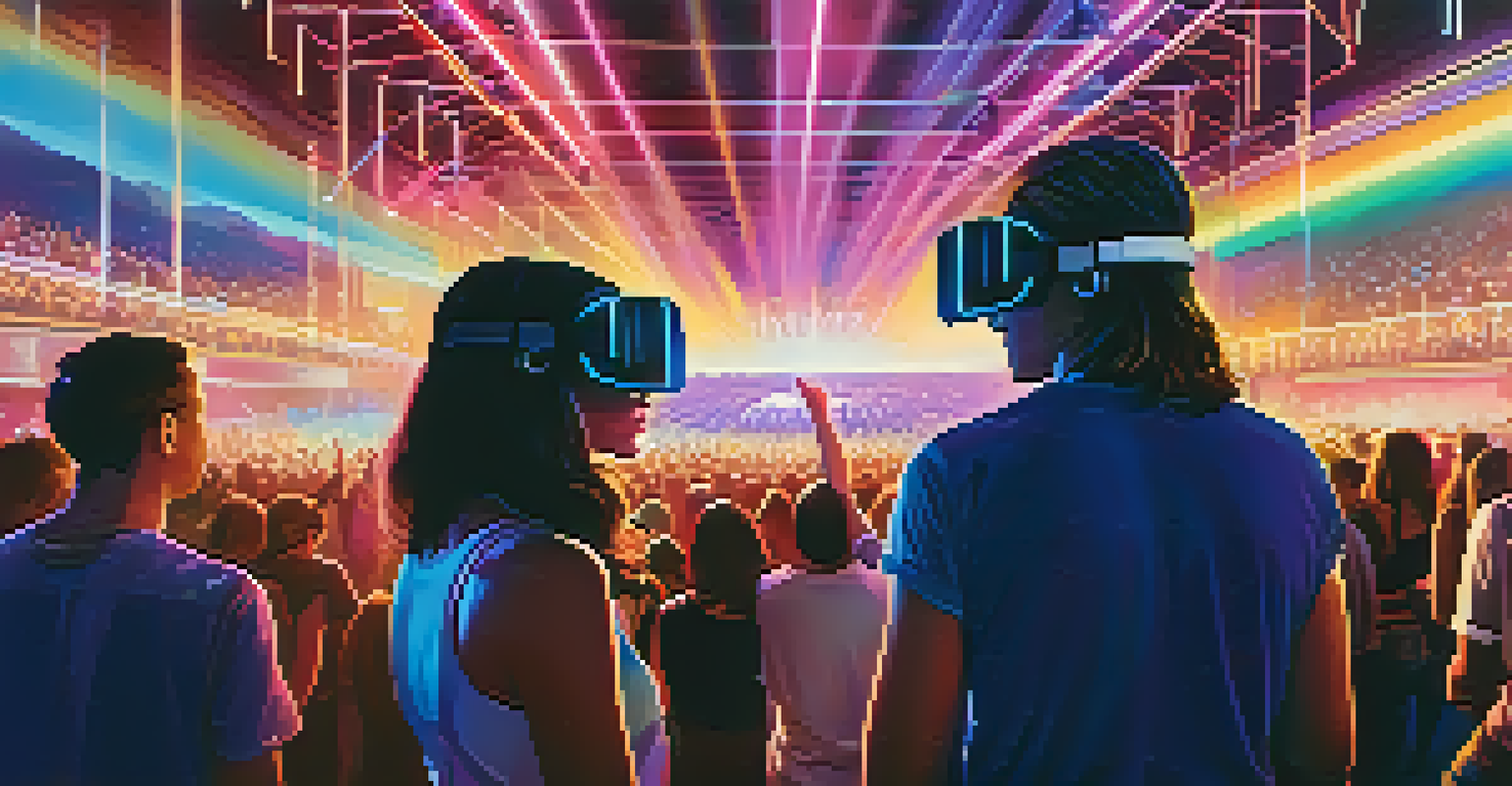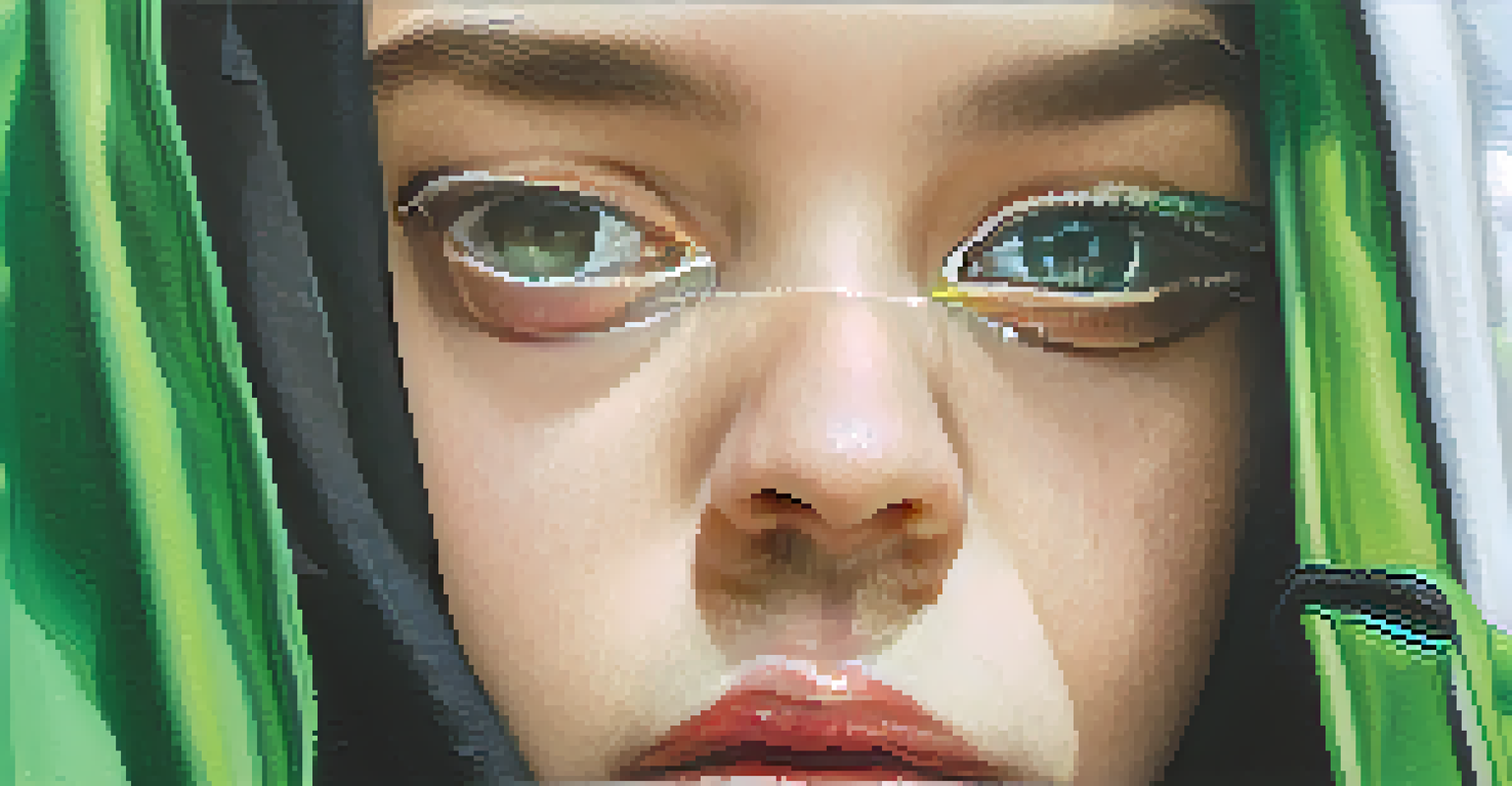Fashion and Music: The Intersection of Style and Youth Culture

The Historical Bond Between Fashion and Music
Throughout history, fashion and music have shared a deep connection. From the flapper dresses of the 1920s jazz age to the punk styles of the 1970s, each musical movement has influenced the clothing choices of its followers. This interplay not only reflects the societal mood but also serves as a canvas for self-expression.
Fashion is the armor to survive the reality of everyday life.
For instance, consider the grunge movement of the early '90s, where bands like Nirvana popularized a laid-back style featuring flannel shirts and ripped jeans. This look wasn't just about aesthetics; it was a rejection of mainstream fashion and a statement against consumerism. The music provided a soundtrack, while the fashion made a powerful statement.
Today, we still see this synergy, as artists often inspire trends that resonate with youth culture. It's a vibrant cycle where music shapes fashion, and fashion, in turn, shapes musical identity.
Fashion as a Form of Identity in Youth Culture
For many young people, fashion is more than just clothing; it’s a vital part of their identity. The choices they make can reflect their beliefs, interests, and affiliations, often influenced by the music they love. A band tee or a pair of statement sneakers can be a badge of honor, signaling allegiance to a particular group or movement.

Take the rise of streetwear, for example. Artists like Kanye West and Travis Scott have not only dominated the charts but also the fashion scene, making it cool to blend music and style. This fusion allows fans to express their loyalty and connect on a deeper level with their favorite artists.
Fashion Reflects Musical Identity
Fashion serves as a canvas for self-expression, often influenced by the music that resonates with youth culture.
This expression is particularly significant in a world that often pressures youth to conform. Fashion becomes a tool for empowerment, enabling young people to carve out their own paths while celebrating their musical influences.
The Role of Social Media in Fashion and Music
Social media has revolutionized how we experience the intersection of fashion and music. Platforms like Instagram and TikTok allow artists to showcase their style while promoting their music, creating a direct link between the two. This visibility can rapidly spread trends and influence youth culture on a global scale.
Music can change the world because it can change people.
Take the viral success of TikTok dances, where users often don outfits inspired by the music they’re dancing to. This phenomenon illustrates how intertwined fashion and music have become, as trends can develop overnight and reach millions. The immediacy of social media fosters a community where fashion and music enthusiasts can engage and inspire each other.
Moreover, social media enables young people to curate their own identities. They can mix and match styles from different genres and eras, building a personal aesthetic that reflects their musical tastes and social values.
Cultural Diversity in Fashion and Music
The fusion of fashion and music transcends borders, celebrating cultural diversity in youth culture. Different genres often reflect distinct cultural backgrounds, which influences fashion trends in unique ways. For instance, K-pop idols have brought a wave of colorful, eclectic styles that merge traditional clothing with modern aesthetics.
Artists like Bad Bunny showcase Latinx culture through fashion, blending vibrant colors and bold patterns that resonate with his music. This not only highlights cultural pride but also opens doors for broader acceptance and appreciation of diverse styles.
Social Media Shapes Trends Today
Platforms like Instagram and TikTok create a direct link between fashion and music, rapidly spreading trends among young audiences.
As young people engage with these global influences, they create a rich tapestry of fashion that celebrates individuality while fostering a sense of community. It’s a beautiful reminder that music and style can unite us, regardless of our backgrounds.
The Influence of Celebrity and Iconic Figures
Celebrities and iconic figures play a pivotal role in shaping the relationship between fashion and music. From Madonna's bold fashion choices in the '80s to Beyoncé's ever-evolving style, these stars often set trends that fans eagerly adopt. Their influence can transform a simple outfit into a cultural phenomenon.
Consider Billie Eilish, who defies traditional beauty standards with her unique style. Her oversized clothing and bold colors have inspired a generation to embrace authenticity over conformity, pushing boundaries in both music and fashion. This shift encourages young people to express themselves freely, often through the lens of their favorite artists.
Through their visibility and impact, these figures not only drive trends but also encourage fans to explore their own styles, blurring the lines between inspiration and imitation.
Street Style: The Heart of Youth Culture
Street style has emerged as a defining element of youth culture, capturing the essence of music and fashion in everyday life. This trend often draws from the music scene, with genres like hip-hop and punk influencing casual attire. The spontaneity of street fashion reflects a spirit of rebellion and creativity that resonates deeply with young audiences.
For example, the rise of skate culture has brought with it a unique blend of comfort and style, characterized by baggy pants, hoodies, and sneakers. This look is not just about fashion; it’s a lifestyle that celebrates individuality and camaraderie, often underscored by the music that accompanies it.
Cultural Diversity Enriches Styles
The fusion of various musical genres and cultural backgrounds leads to a vibrant tapestry of fashion that celebrates individuality.
Street style serves as a canvas for self-expression, where young people can experiment and showcase their tastes. It’s a celebration of authenticity, inviting everyone to embrace their unique style while connecting through shared musical interests.
The Future of Fashion and Music in Youth Culture
As we look ahead, the intersection of fashion and music will undoubtedly continue to evolve. Emerging technologies like virtual reality and augmented reality are poised to change how we experience both music and style. Imagine attending a concert where the audience can wear digital fashion, perfectly synchronized with the music, creating an immersive experience.
Furthermore, sustainability is becoming an essential focus in both industries. As young people become more conscious of their choices, fashion brands are adapting by promoting eco-friendly practices. This shift aligns with the values of today’s youth, who are passionate about making responsible choices that reflect their beliefs.

The future promises exciting developments as fashion and music continue to intertwine, driven by the creativity and innovation of the next generation. This ongoing relationship will empower youth culture to challenge norms, celebrate diversity, and express their identities in new and meaningful ways.